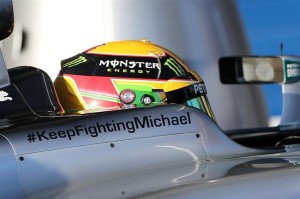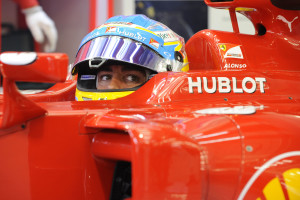
Eleven teams will start the 2014 Australian grand prix. Beyond this obvious fact not much else can be forecasted. Unpredictability in Formula 1 is back with a vengeance and brings with it a bevy unanswered questions.
How many drivers will finish the Australian grand prix? The saying that to finish first, first you must finish has never been so appropriate; and the prediction of half the field finishing the race is seen as generous by some. Reliability has dominated the winter testing season as teams struggled to integrate the new power units and electronic systems. Renault powered cars were stricken on the side of the track most often with issues ranging from cooling to complete failure. Meanwhile the consistent crooning of the Mercedes power stamped its authority at the top of time sheets.
The pecking order after twelve days of testing suggests that Mercedes, Williams and McLaren are the front running teams, at least on paper. These teams, all Mercedes powered, delivered the most consistent performances over long runs and in qualifying trim. The newly renamed Williams Martini team looks to have taken a significant step forward and Felipe Massa believes that he will start the Australian GP with a good chance of mixing it at the front. It would be especially sweet for the former Ferrari driver should his Williams feature in the top three.
 To be the favourite on paper doesn’t carry much weight, if any at all. The reality is that Red Bull Racing may yet show up Down Under and perform quite well. The car rolled into the back of the truck on the final day of testing will hardly resemble the one that takes to the Albert Park circuit this weekend. Several teams will bring a raft of updates for their cars as they aim to learn as much as possible before the start of Sunday’s race.
To be the favourite on paper doesn’t carry much weight, if any at all. The reality is that Red Bull Racing may yet show up Down Under and perform quite well. The car rolled into the back of the truck on the final day of testing will hardly resemble the one that takes to the Albert Park circuit this weekend. Several teams will bring a raft of updates for their cars as they aim to learn as much as possible before the start of Sunday’s race.
The Ferrari team has remained under the radar with neither of its mega quick drivers revealing too much about the team’s prospects. The Italian squad’s winter hasn’t been awesomely positive nor has it been disastrous. Fernando Alonso was particularly underwhelmed about driving in 2014. “We were saving the tyres from lap one of the stints last year, and we are saving the tyres from lap one this year. That’s no different. I don’t think things will change that much, but obviously the cars are slower,” said the double champion. It is worth noting that the Alonso is one the greatest politicians in the F1 game. A bit of psychological by-play is never too far from his repertoire.
In a normal year of F1, the first race of the season requires for a variety of factors to come together just right to ensure success – and 2014 is no  normal year. Teams are limited to 100 kilos of fuel per car for the grand prix which will call for vigilant fuel management throughout the race. As before, tyres have to be looked after, so too the power units which are limited to five per season. However, in F1 2014 the driver can be the difference. “It really is a driver’s car – more than the old ones,” said McLaren rookie Kevin Magnussen. “It’s a bit more difficult with more torque. It’s difficult to take care of the tyres and I think it’s going to be tricky. You need more skill and more sensitivity in your throttle.”
normal year. Teams are limited to 100 kilos of fuel per car for the grand prix which will call for vigilant fuel management throughout the race. As before, tyres have to be looked after, so too the power units which are limited to five per season. However, in F1 2014 the driver can be the difference. “It really is a driver’s car – more than the old ones,” said McLaren rookie Kevin Magnussen. “It’s a bit more difficult with more torque. It’s difficult to take care of the tyres and I think it’s going to be tricky. You need more skill and more sensitivity in your throttle.”
Few things are the same in Formula 1 2014. The cars do not look the same, they do not sound the same and they are a tad slower. However, the skill of the greatest drivers in the world and absolute unpredictability of it all ensure that it remains the greatest spectacle. This is Formula 1 2014.


